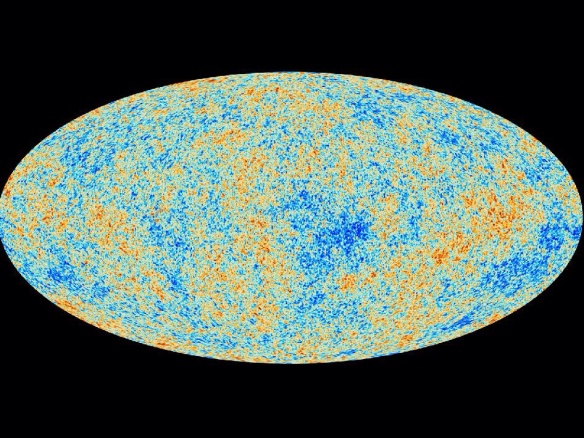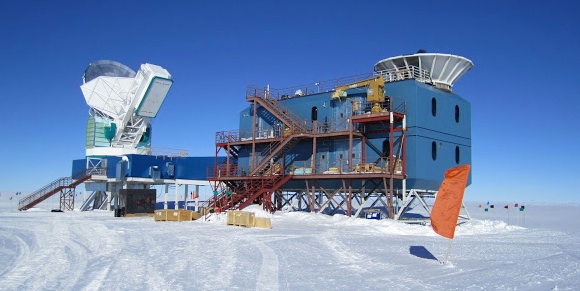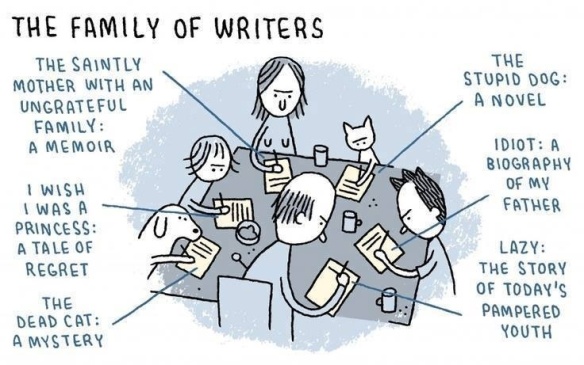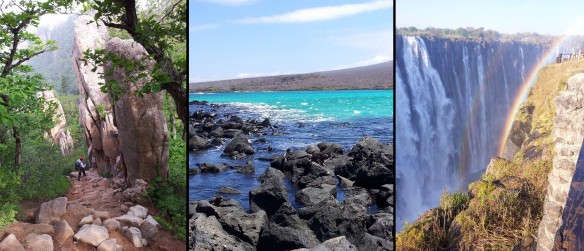News this past March out of Harvard University’s Cosmic Microwave Background (CMB) Group detailing discovery of the possible evidence for inflation in the early universe is taking a universal beating as of late for failing to properly account for dust, perhaps in the group’s haste to leave its competition in it.
Their findings using the South Pole-based BICEP2 telescope hinge on the detection of gravitational waves, which cosmologists have long predicted would produce a specific type of polarization. They were correct in more ways than one.
I remember seeing the media advisory on the American Astronomical Society (AAS) listserv announcing the Monday morning press conference at Harvard’s Smithsonian Center for Astrophysics — an unusual occurrence in my admittedly relatively young experience in science media circles, outside of announcing a Nobel Prize. Given that Harvard is a fellow partner in the Giant Magellan Telescope, I emailed Texas A&M astronomer Nick Suntzeff in hopes that he would know what could justify such a media frenzy.
He did. And per his usual, he had a strong, succinct opinion on both the breakthrough and the group’s manner of conveying it to the world: “All this drama — science did not used to be like this.”
Months before the latest round of back-pedaling in the media, Houston Chronicle science writer Eric Berger had been among those sounding the alarm regarding the damage done to science’s credibility and public image. I emailed Nick then for his counsel, just as I did when I saw Dennis Overbye’s New York Times feature and then another in Nature on back-to-back days earlier this month. Nick didn’t mince words. Nor should he, in my opinion. Then again, we’re both fans of implied duty and inherent responsibility.
More importantly, he offered some great comparative insight on how he and the High-Z Supernova Search Team handled their own early stage Nobel Prize-winning research that ended up proving the universe’s expansion is actually accelerating, thanks to a mysterious substance they co-discovered: dark energy.
“When we discovered dark energy, all we did was to find that the distant supernovae were too faint in comparison to what was expected,” Nick wrote. “We immediately worried that there was some sort of dust in the universe we did not know about that could cause this. We gave a simple argument as to why we felt this dust could not be causing the effect. Dust makes stuff look red — look at something through a forest fire, and it appears red. Same in the universe. We did not see this reddening.
“Also, if there was dust in the universe that we did not know about, more distant stuff should appear fainter because the light has to travel through more dust. This latter effect was difficult to measure, but we did show it was unlikely. All this was in our papers. What we did not do was to say that we have considered dust as causing the faintness of distant supernovae and then not tell the reader why we concluded this. That is what the BICEP2 paper did, and it confused us all as to why they did this.”

Planck satellite map of the cosmic microwave background — the radiation ripples left over from the Big Bang. (Credit: NASA/European Space Agency)
If astrophysicists the likes of Nick Suntzeff are confused, one can imagine where this leaves the public, both in terms of understanding this “discovery” and in their general impression of science.
First, do no harm.
* ~ * ~ * ~ * ~ *
The BICEP2 kerfuffle (have always wanted to use that word!) reminds me of a previous occasion when Nick flexed his writing muscles in the name of responsible science. The result: a memorable 2011 guest post for the Last Word On Nothing blog in which he simultaneously describes and decries how science is done these days.




